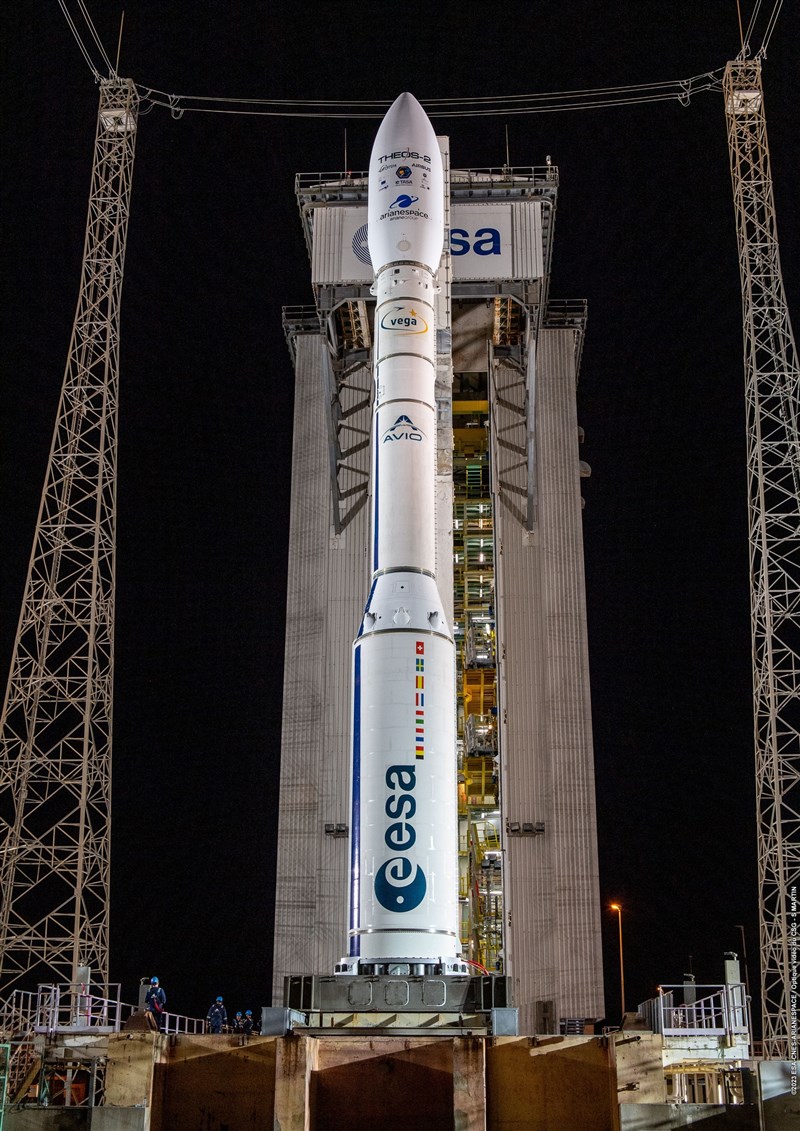Taiwan's first domestic Triton weather satellite launches
The Vega C rocket carrying Taiwan's inaugural domestically-produced Triton weather satellite is seen in this photo taken on Sunday in French Guiana. Photo courtesy of Centre Spatial Guyanais Oct. 9, 2023.

Taiwan hit a milestone Monday with the successful launch of its inaugural domestically-produced Triton weather satellite, also known as the Wind-Hunter Satellite, which is set to help accurately predict extreme weather events.
The satellite was launched from French Guiana at 10:37 p.m. local time on Sunday (9:37 a.m. Monday Taiwan time) as part of an Arianespace Vega C rideshare mission, that is destined for orbit at an altitude of approximately 550-650 kilometers, according to the Taiwan Space Agency (TASA).
TASA Director-General Wu Jong-shinn (吳宗信) previously told the press that the Triton project, initiated in 2013, had finally reached its launch phase after 10 years of hard work.
Wu emphasized that the launch of Triton was Taiwan’s first foray into using domestically engineered weather satellites and that the components used were designed and manufactured locally, including Taiwan’s proprietary global navigation satellite system-reflectometry (GNSS-R).
The GNSS-R boasts a data processing module developed collaboratively by TASA, the Central Weather Administration, and other technology and meteorology experts.
The name of the satellite draws on inspiration from Greek mythology. Triton, the son of Poseidon and the god of the sea inherits a trident that symbolizes maritime domination and wields a conch with the power to command the wind and the waves.
Triton’s primary function will involve collecting sea surface wind data and complementing ground radar wind field data to help predict typhoon paths and heavy rainfall more accurately.
Wu, affectionately known as “rocket uncle” (火箭阿伯) in Taiwan due to his down-to-earth demeanor, said that the launch of the satellite would be transformative for Taiwan and help the country become an exporter of crucial meteorological data.
Wu underscored the significance of Triton using 11 key Taiwan-made components and technologies related to satellite development.
“If it successfully navigates the challenges of the space environment, it will accrue valuable data, providing substantial support for Taiwan becoming a player in the global space supply chain,” he noted.
However, Wu acknowledged that Taiwan’s investment in space programs had historically lagged and only begun showing significant promising signs this year.
Compared to South Korea, which began space program investments in 1990-1991, he said that the South Korean budget was four to five times greater than Taiwan’s.
Wu attributed Taiwan’s strategic limitations at that time to international circumstances and said the focus had solely been on satellites, not rockets, without elaborating on the specifics.
The scientist emphasized the need to catch up and said he hoped to see significant progress within the next three to five years.
When asked what’s next for TASA, Wu revealed that the agency is set to expand.
Collaboration with foreign counterparts is on the agenda along with a hope to acquire more data that can contribute to the advancement of meteorological forecasting and other scientific advancements, according to Wu.
Taiwan launched its first domestically developed remote sensing satellite FormoSat-5 in 2017.
Date: 2023-10-09
Source: Focus Taiwan